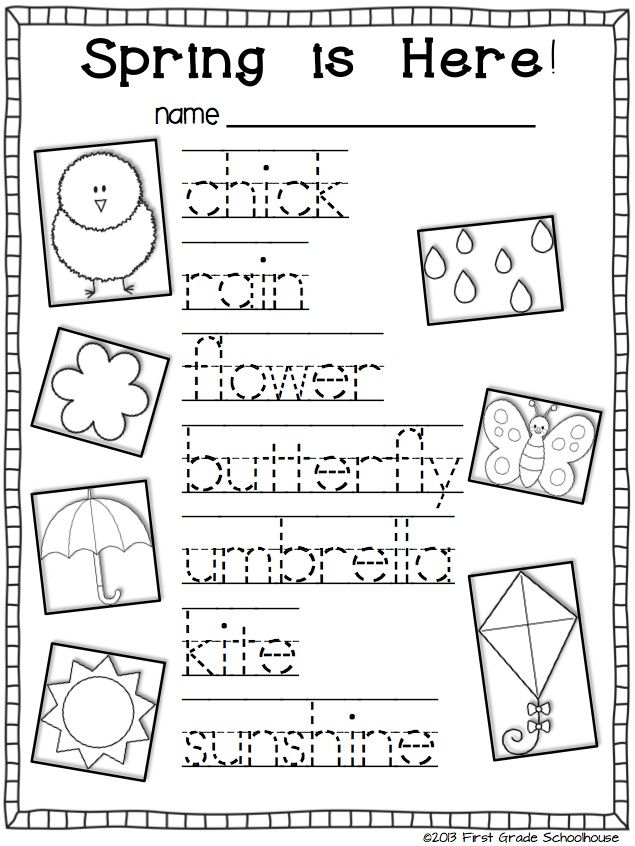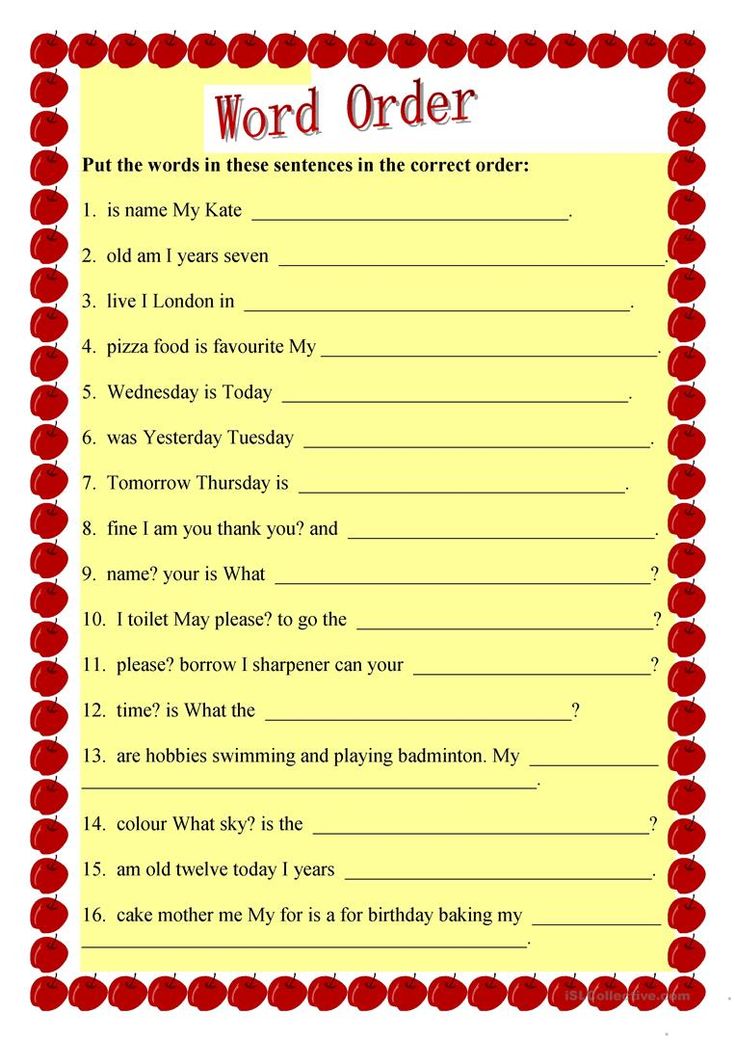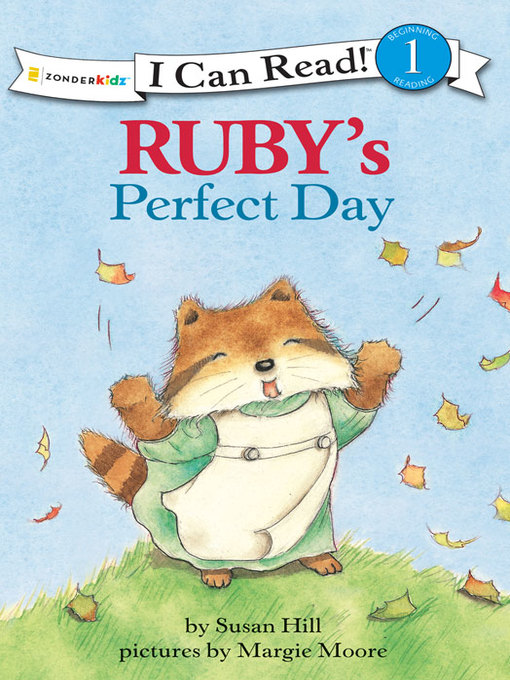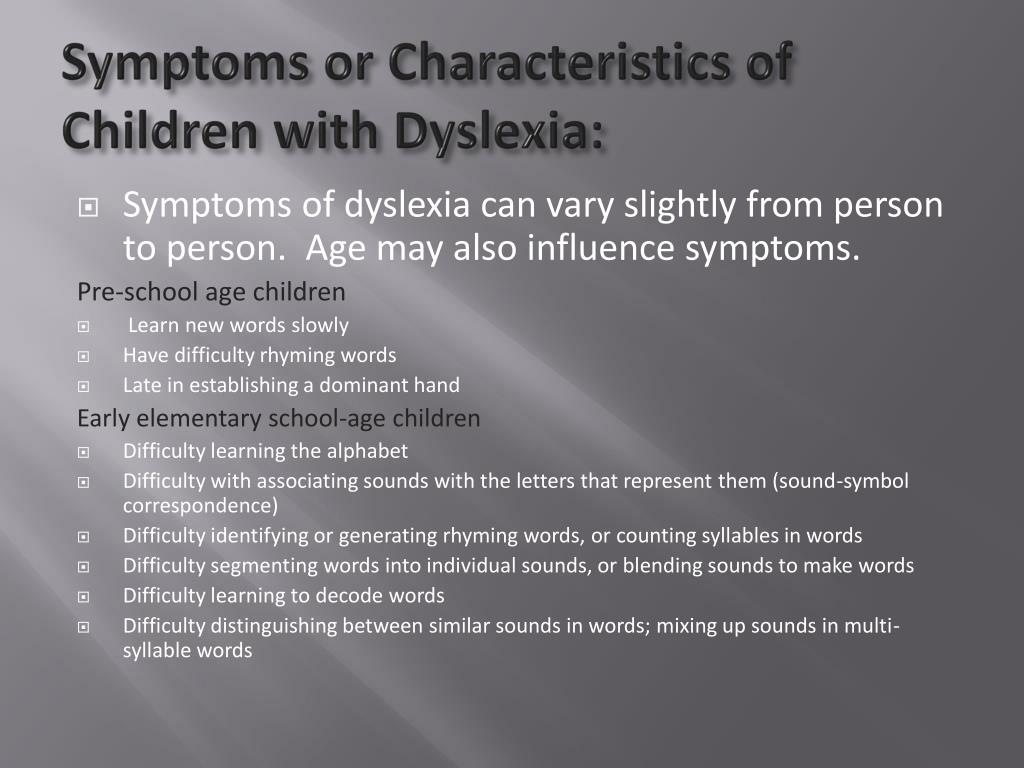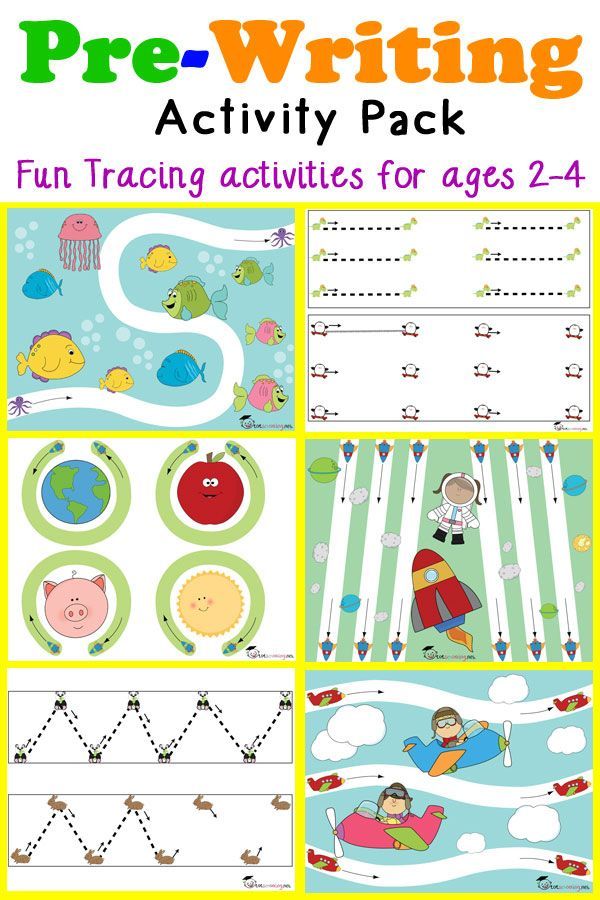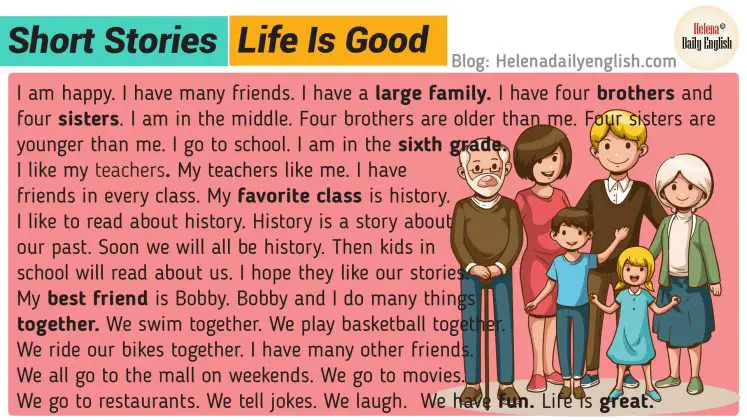Two syllable words for first grade
2-Syllable Word Lists - 175 Two-Syllable Words
Want more word lists constructed from a children's dictionary?
See Comprehensive Word Lists
Interested in the phonics program that uses these word lists?
See the OnTrack Reading Advanced Code Phonics Workbook
Beginning the Multisyllable Program: 2-Syllable Words
The two lists of two-syllable words at the top are used in the OnTrack Reading Multisyllable Method. The first list contains 85 words on six pages separated into chunks according to the Main Rule and Three Exceptions. The second contains 90 words on two pages presented as normally appearing words.
Note to New Arrivals: The rest of this page consists of instructions for using the word lists for those using the free
OnTrack Reading multisyllable program. Use the index on the sidebar to access the entire program if you found this page using a search engine and want to learn more.
Using the List of Chunked Words
The prerequisite for use of this list is simple. Your child should be able to look at the beginning chunk of each word and just say it, without having to first say each separate sound in the chunk. If he can do this, he is comfortable enough with one-syllable words to begin on multisyllable words. Just be aware that many of the errors that your child might have commonly made on one-syllable words will again resurface at this higher level of difficulty. That is, he will again mix sounds around in words, add sounds that aren’t there and omit sounds that are there.
Follow the instructions and complete the first page. Your child should be saying the entire chunk, rock, when he writes it, and not be saying each sound separately. At first, this will be difficult if your child has spent several sessions practicing saying each sound separately as he writes it, as is done in the OnTrack Reading Phonics Program when learning the spellings of the various sounds.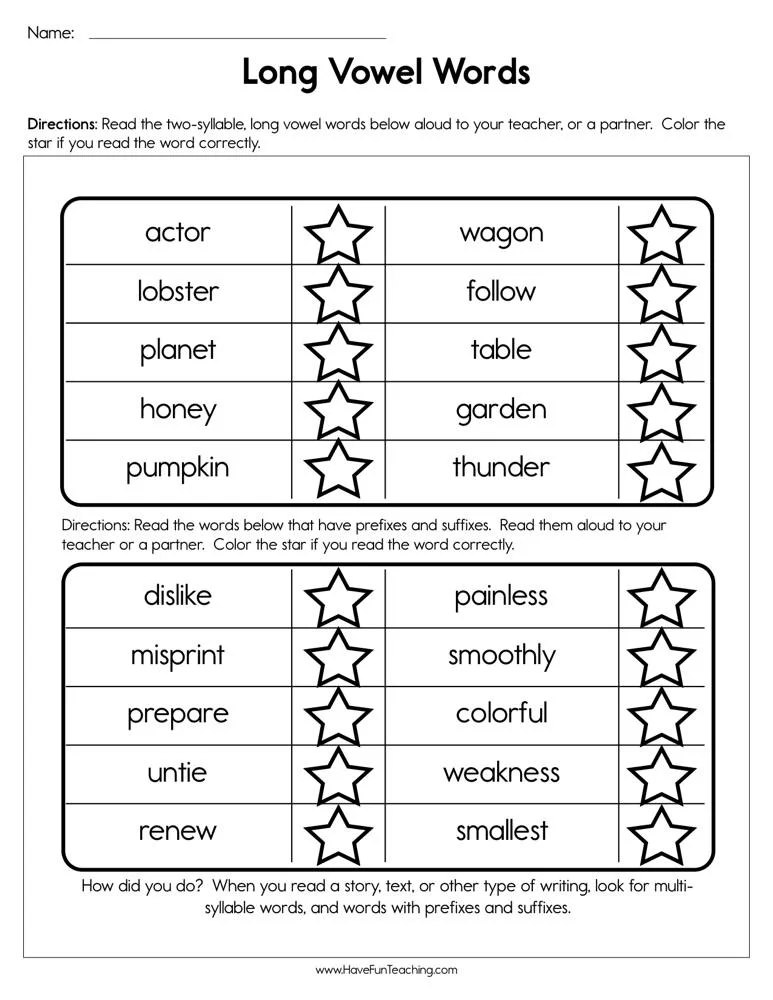
At this point, do not explain the Main Rule and the Three Exceptions . Just have your child read the chunks, combine them and say the word, and then have him examine each chunk for spelling before you cover it. Your child then writes one chunk of the word on each line, saying the complete chunk as he writes it. None of the words on the first page require your child to use the strategy of trying a different option for the vowel sound. He should be getting the correct result in every case as long as he is using the First Vowel Sound.
When he gets to the chunk le in cattle just tell him that whenever he comes across the digraph le at the end of a word he should say /ul/ (pull without the /p/) . He will run into it again in rattle and then in marble on the first page.
Except for marble, every one of the words on the first page utilizes one of the Three Exceptions to the Main Rule, but don’t get into this.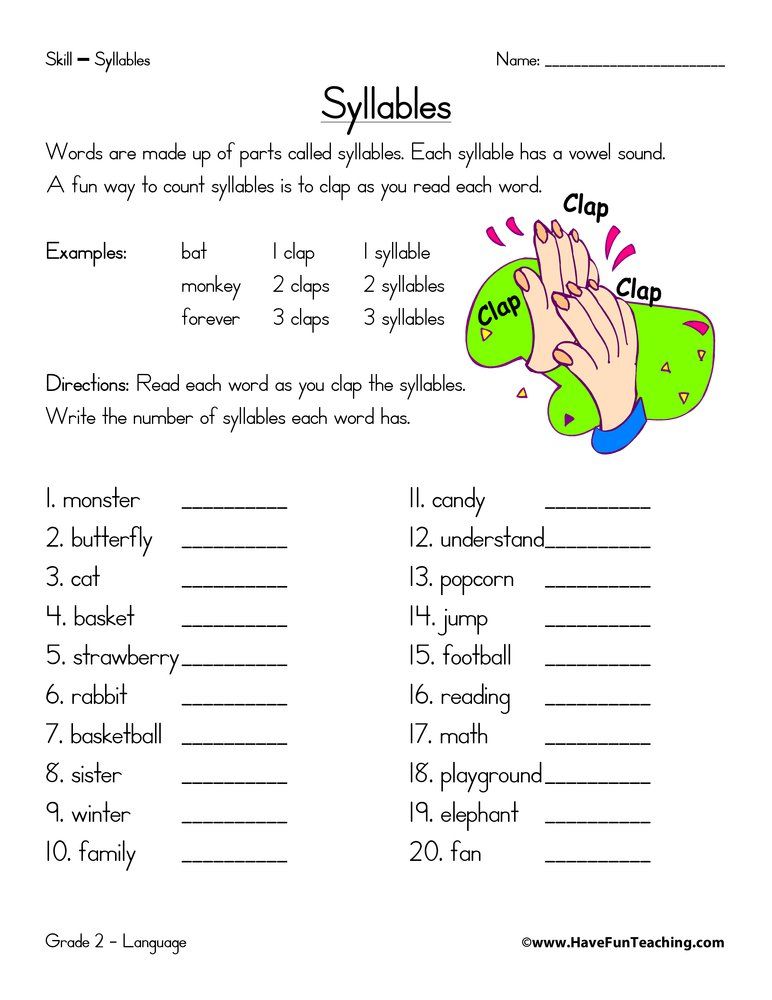 The purpose here is to expose your child to chunks that contain only First Vowel Sounds.
The purpose here is to expose your child to chunks that contain only First Vowel Sounds.
You can continue on to the second page of chunked words if your child has no trouble with the first, but don’t do more than one or two pages at one session. Instead, if all went well, move on to the second word list containing two pages of whole words.
Using the "Read/Chunk/Spell" List
This list has three purposes. First, it is used for reading (decoding) practice. Then it is used for chunking practice. And finally, it is used for spelling practice. It is called the Read/Chunk/Spell list as a reminder of its uses.
By the time you use this list, your child should have completed the worksheets on doubled consonants and markers that were discussed earlier. Explain the Main Rule to your child and go over the First and Second Exceptions, which he should understand if you remind him of the worksheets. Don’t worry about the Third Exception just yet. You won’t need to apply it until the second page when your child reaches the word
hundred.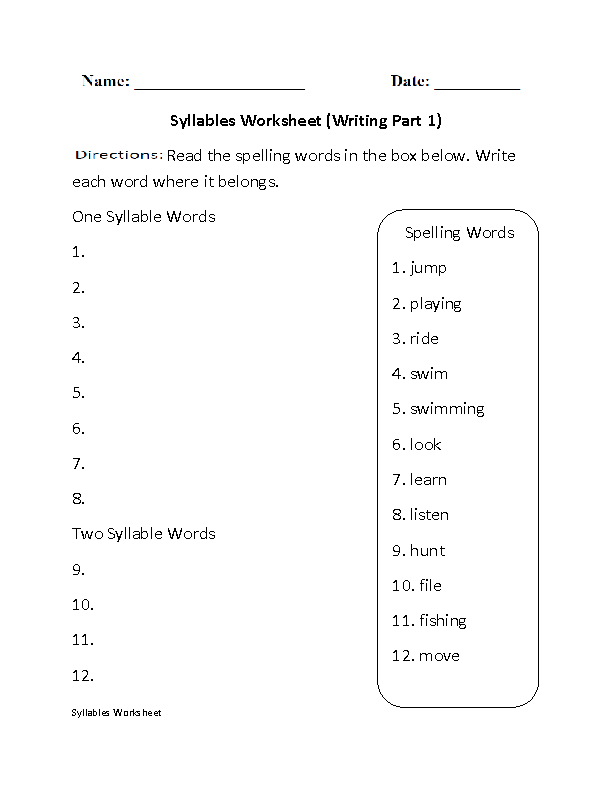
At the first session, just do the ten words in the first column. Follow the directions, checking off the words he reads on the first attempt. Then have him chunk each word that he correctly read by drawing a vertical line between the chunks. (Skip the ones he missed for now.)
In the first ten words, every vertical line belongs immediately after the vowel spelling. Here are the correct chunks for the first ten words (obviously they aren’t syllables):
pur-ple, slee-py, or-bit, flow-er, base-ball, curr-ent, grea-ter, lone-ly, pla-net, sur-vive
Here is how you handle each word depending on what your child says or does when chunking it.
purple: If he says pur, but draws the line after pu, tell him he split the vowel sound right in half. If he tries to make the first chunk purp, tell him to stop after the vowel sound (like the rule says.)
sleepy: If he tries to make the first chunk the syllable sleep, tell him to stop after the vowel sound.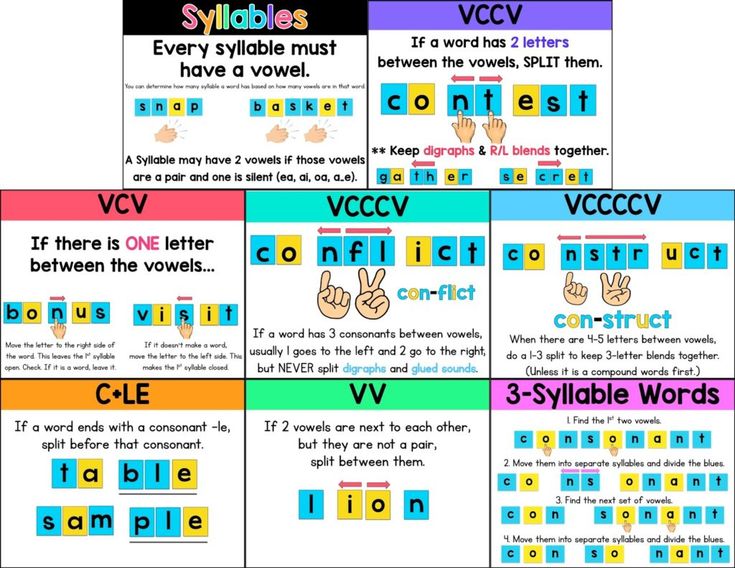
orbit: Same approach as the first two words.
flower: On the initial pass (when he's reading the words), if he chooses the /oe/ sound for the vowel sound, use this as the first opportunity to introduce the strategy. After he says floe-er, as in blower, he might self-correct. If not, immediately point to the ow and simply say, “This can be /oe/; what else can it be?” If he knows, he’ll get flower. If he doesn’t, tell him it can be /ow/ and let him proceed.
baseball: If he draws the line after ba or bas, tell him he split the vowel sound and indicate the a-e in base.
current: If he draws the line after u or ur, again tell him that he split the vowel sound and have him place it after urr.
greater: If he goes with great, tell him to just stop after the vowel sound. If he then splits the ea, correct him. Also, if he first says the /ee/ sound and comes up with greeter, use this as another opportunity to teach him the primary strategy.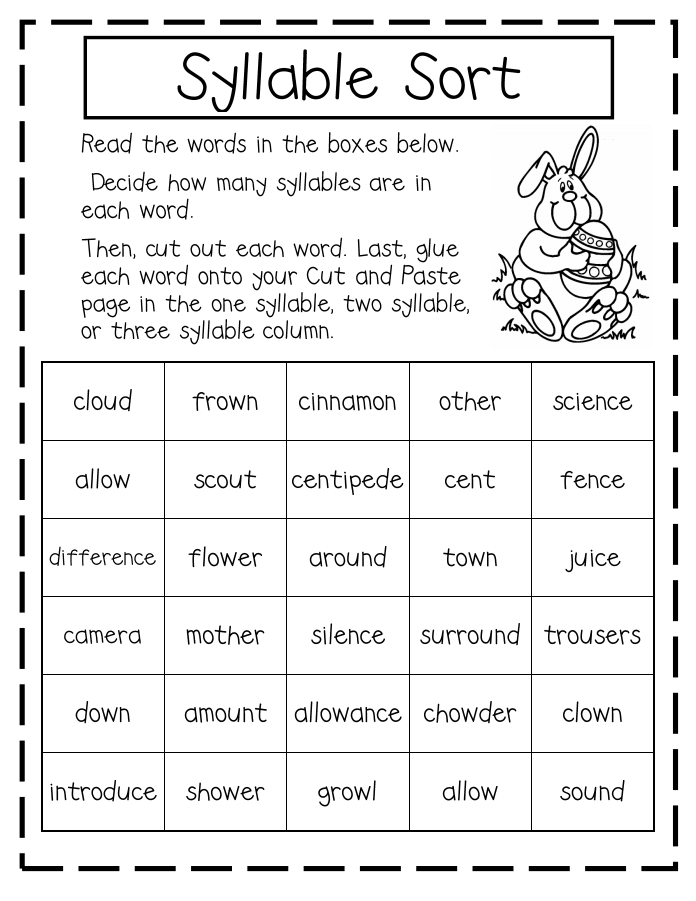 Simply say, “It could be greeter, but we spell greeter with two e’s. What else can this be?” (Indicate the vowel sound with your pencil.) If he comes up with /ae/, he’ll usually get the word. If he can’t come up with /ae/, just tell him that sound and let him proceed.
Simply say, “It could be greeter, but we spell greeter with two e’s. What else can this be?” (Indicate the vowel sound with your pencil.) If he comes up with /ae/, he’ll usually get the word. If he can’t come up with /ae/, just tell him that sound and let him proceed.
lonely, planet and survive are handled similarly.
Now, on the third pass through the list your child will be examining the words he couldn’t figure out. Flower, baseball, greater and lonely are key candidates for this honor. Flower and greater might be hard because your child doesn’t know the code well enough to try more than one option. Baseball and lonely are special cases, in that the vowel sound in the first chunk of both words is split (a-e and o-e, respectively) and your child might miss this. Try pointing out the a-e in baseball and see if he then picks it up in lonely.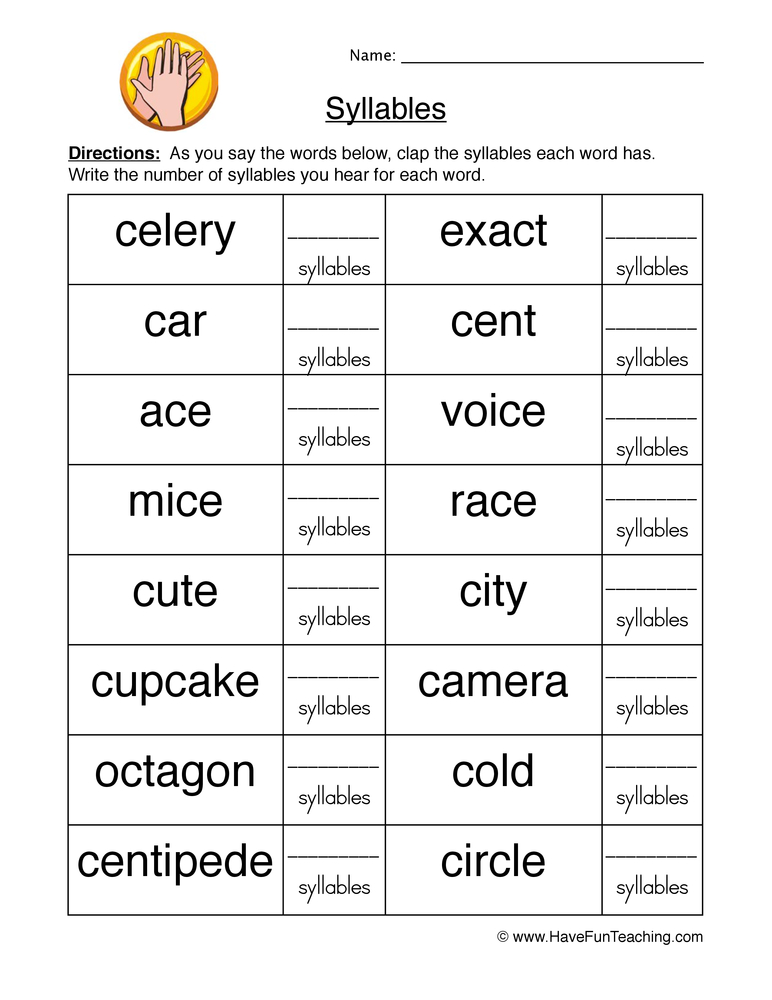 If he misses it again just point out the o-e spelling of /oe/.
If he misses it again just point out the o-e spelling of /oe/.
A few examples of this type of word are spread throughout the word list because your child will likely need some exposure to them if he is to easily pick them out. Otherwise, you might find him chunking a word like lonely as lo-ne-ly, with three chunks. Eventually they won’t be a problem, but such words are likely to be difficult at first until your child starts to become better aware of such words.
Spelling Practice
Take a minute to explain to your child how you write longer words while saying them chunk by chunk in your head (which you almost certainly do.) Tell him that saying each individual sound would cause you to lose your train of thought, but saying the whole word at once would make you get lost in the spelling of the word.
Then have your child circle about three of the last ten words covered on the whole word list and you circle a couple more that you think he should also try. Have him examine each chunk for unusual spellings, going over all of the circled words. Then conceal the word list from him and give him a spelling test. Have him write each word with a small gap between the two chunks so you can see the boundaries he’s setting. Not only will this help his spelling, but it will accustom him to writing the chunks exactly as he’s saying them.
Have him examine each chunk for unusual spellings, going over all of the circled words. Then conceal the word list from him and give him a spelling test. Have him write each word with a small gap between the two chunks so you can see the boundaries he’s setting. Not only will this help his spelling, but it will accustom him to writing the chunks exactly as he’s saying them.
Pacing of 2-Syllable Instruction
If you are using the OnTrack Reading Advanced Code Phonics Workbook, and following the detailed instructions on working with the four threads within the curriculum, you will see that the 2-syllable word lists can be started before your child learns all of the code. In fact, working in 2-syllables will help cement his knowledge of what he’s already covered because, by its very nature, this approach always has him concentrating on vowel sounds and their spellings, as well as their various pronunciation options. In other words, this work gives context to the earlier work where he was just learning random bits of code.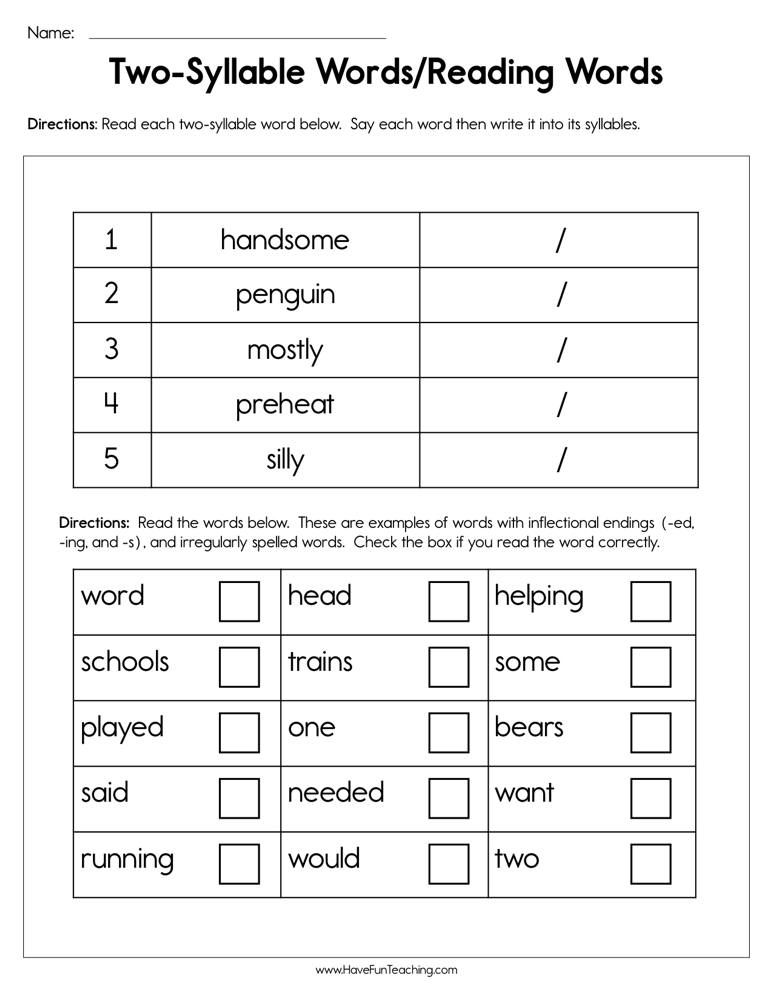
Spread the work on the word lists over several sessions. Go at a pace of about one page of chunked words per session and ten words from the whole word pages. You should finish the chunked words a few sessions before you finish the pages of whole words used for reading, chunking and spelling. In fact, you can move on to 3-syllable chunked words before finishing the 2-syllable work on whole words.
Intended Results
If you are using the workbook, this is the point in the OnTrack Reading Phonics Program where it all starts coming together. Done correctly, any habitual guessing can be overridden by a more effective strategy. You might even note the first time your child has the “light bulb” experience, when he actually tries one option, takes the time to realize it’s not a word and then, instead of guessing, or adding sounds, or ignoring sounds, he just tries the second vowel sound and actually gets the word. If you see this happen, point out to him how well it worked compared to what he has been doing, and keep pushing that same encouragement at him every time you see him succeed at a higher level of difficulty.
And, as you are doing that, and watching your child’s confidence in the strategy grow daily, also realize that this strategy has him continuously practicing the various options for each of the ambiguous vowel and consonant spellings. In a relatively short time, he will not only understand what you mean when you tell him ch can be /ch/, /c/ or /sh/, but he will be able to tell you and anyone else that this is the case. This method builds code knowledge, and particularly vowel code knowledge because of the emphasis on locating the vowel sound spellings in each unfamiliar word your child encounters.
The next page, 2-Syllable Chunking Explained, goes over some of the chunked words and describes the implications of chunking them in the manner described.
2 Syllable Words: Teaching Tips and Fun Activity Ideas
Share and save!
82 shares
This post may contains affiliate links. This means if you buy something through a link in this post, I will make a small commission at no cost to you.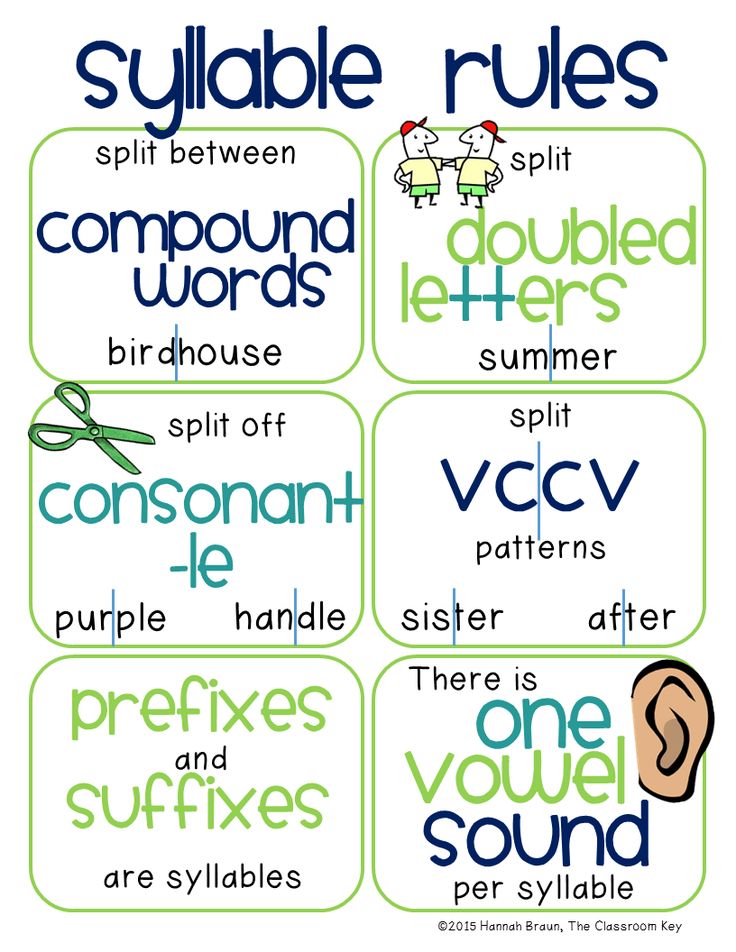 This allows me to keep bringing you great content.
This allows me to keep bringing you great content.
Is your child doing well reading sight words and beginning word families? Are they ready to move on to two-syllable words? It’s so exciting when our children really start to read – a whole new world is opened up to them and we get to see the wonder as they explore and delight in it!
It seems there are always some obstacles as children increase their reading abilities. Some of the most common problems are being able to pronounce new words correctly, skipping parts of words, or guessing at words or parts of words.
I don’t know why kids do some of these things, but if I had to guess, I think it’s because they are so excited to be humming along reading at such a great pace and then BAM! they hit a word they don’t know. They don’t want to get hung up and slow down to sound out the word, so they just guess at part of the word and move on. At this stage, kids are more concerned with reading than comprehending.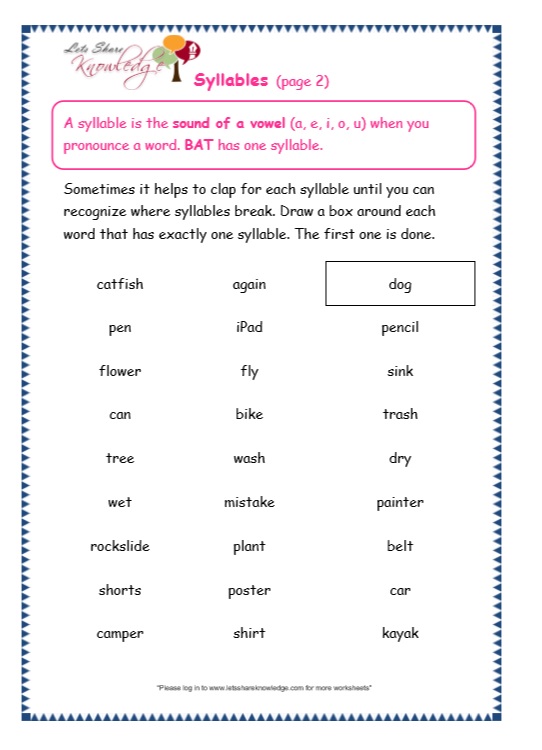 So, giving them some quick tools to take care of these roadblocks can really help them in their reading.
So, giving them some quick tools to take care of these roadblocks can really help them in their reading.
Let’s talk about syllables and ways to help your child improve their reading abilities as they begin to encounter more complex words!
What is a Syllable?
A syllable is often called a “word chunk”. Syllables are the sounds that go together to create all of our words. The word muffin is made up of two syllables: muf and fin. Learning to find and decode the syllables in unknown words is a critical skill to gaining reading fluency and comprehension.
In the beginning, children start reading one-syllable words. Their first sight words and word family words are all one-syllable words. Most them are short vowel words, too. Once they are fluently reading one-syllable words, it’s time to move on to two-syllable words.
An easy place for most kids to start is with words that have simple pronunciations.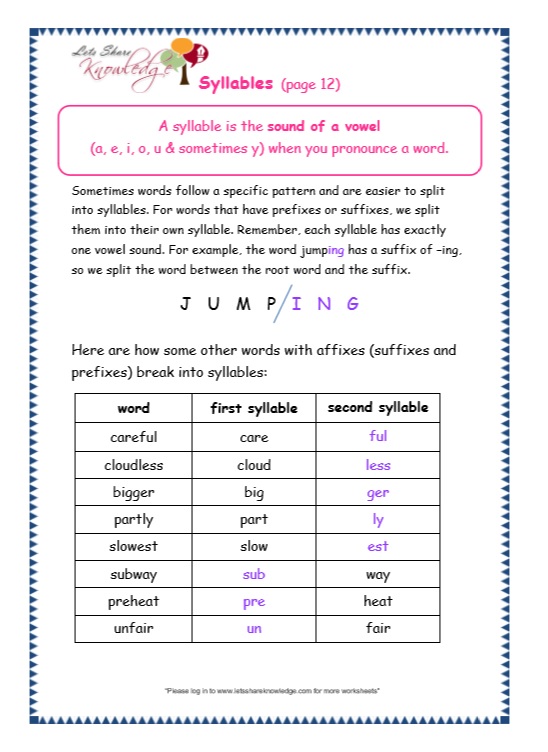 A lot of these words will have two short-vowel syllables since that is what early readers are most familiar with sounding out. Think muffin, button, combat.
A lot of these words will have two short-vowel syllables since that is what early readers are most familiar with sounding out. Think muffin, button, combat.
Decoding 2 Syllable Words
There are a few guidelines that make it easier to decode new two syllable words.
1) In general, the first syllable is stressed for nouns, adjectives, and adverbs. Think woman, muffin, stuffy, careful, quickly, often.
2) Verbs usually have the second syllable as their stressed syllable. object, record, conflict
3) Open syllables (syllables that end in a vowel) almost always have a long vowel sound. ho-tel, be-gin, ba-sic, a-pron
4) Closed syllables (syllables where the vowel is surrounded by consonants) tend to have short vowel sounds. but-ton, muf-fin, but-ter
Working on syllable rules and syllable types can overcome most common early reading obstacles.
Surya, Teach Me. I’m Yours.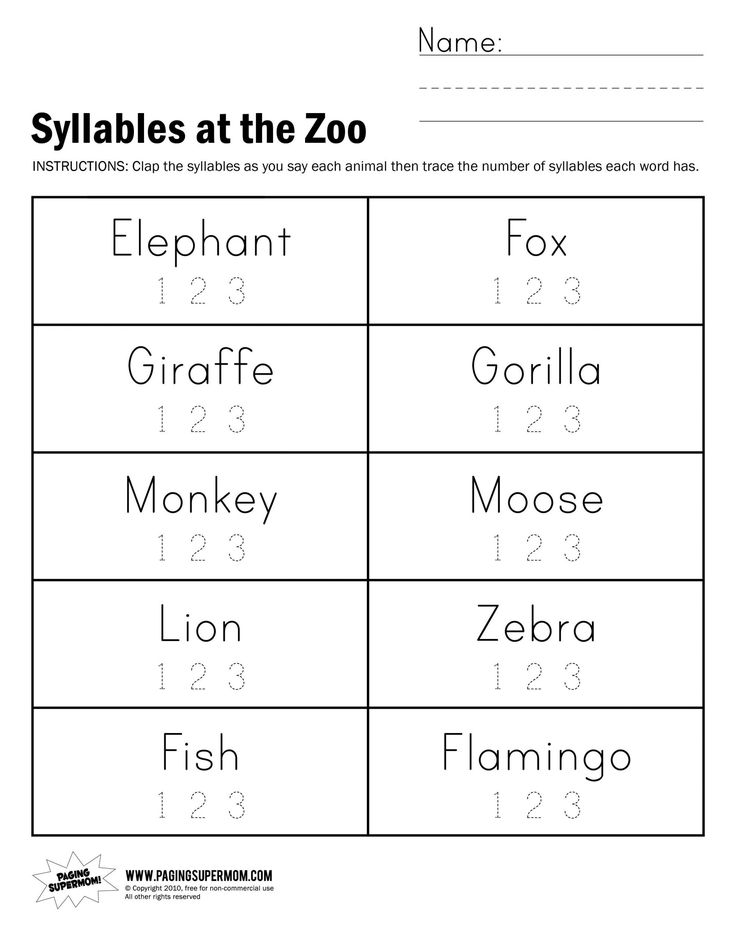
Common Pronunciation Problems
My daughter is a great reader. But, she when she was learning to read, she refused to learn phonics or spelling rules in the beginning. I have noticed that sometimes she struggles with decoding new words when she comes upon them in her books. Here are some of the most common pronunciation problems and how to work on correcting them.
Leaving Out Letters
I noticed when my daughter reads, she sometimes leaves out whole letter sounds. She will see the word Pompei and pronounce it Po-pei (and she’ll pronounce it poe-pee for example. One way to work on this obstacle is to do some activities where you practice breaking down larger unknown words by syllable.
There are lots of activities you can do together to work on reading by syllables. clip cards are usually a hit with kids. But, you can also find some really cool 2-syllable words and practice breaking them down into syllables.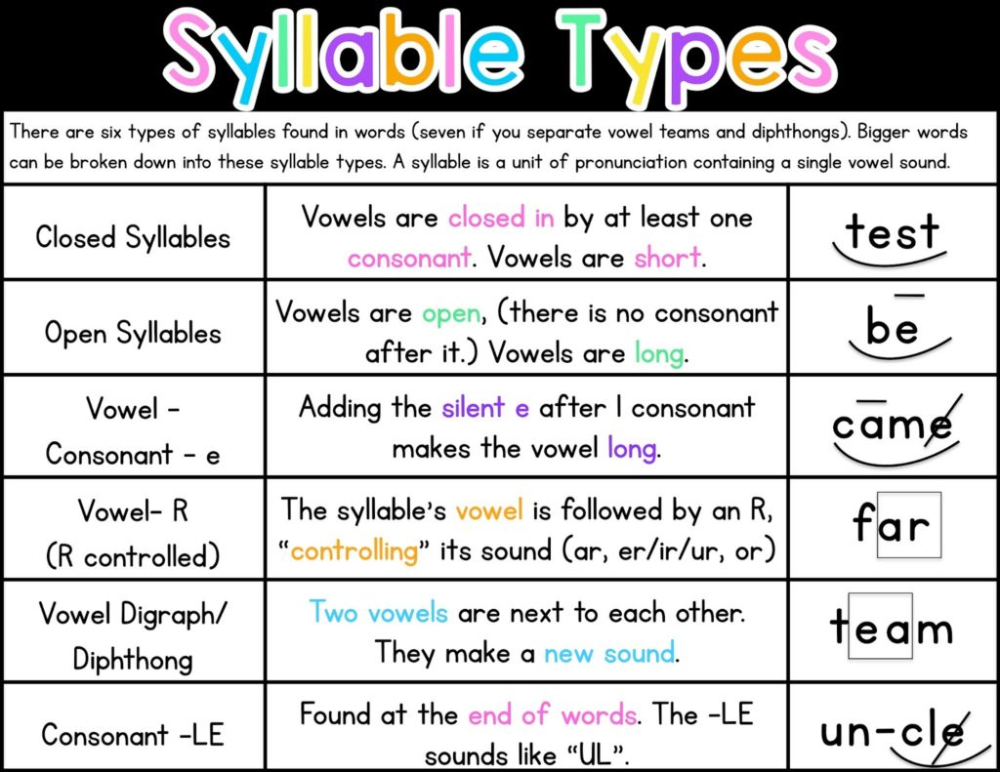
This is also a great time to talk about closed- and open-syllables. Knowing that a closed-syllable usually has a short vowel sound and an open-syllable usually has a long vowel sound can really improve pronunciation when it comes to reading 2-syllable words.
Leaving Out Vowels
Another common problem with spelling and reading words with two syllables is that children will often leave out a vowel sound.
My daughter was making signs for a game she and her sister were playing one day. They were setting up a library in their bedroom. They made a sign that said “Oppn for Busness”.
This common reading mistake can be worked on by talking about the face that every syllable needs to have one vowel sound. The word open has two syllables. Therefore, it must have two vowels. The word business has three syllables, so….three vowels. Clapping out the number of syllables for a word is a great way for a child to know how many vowel sounds he or she will need to have.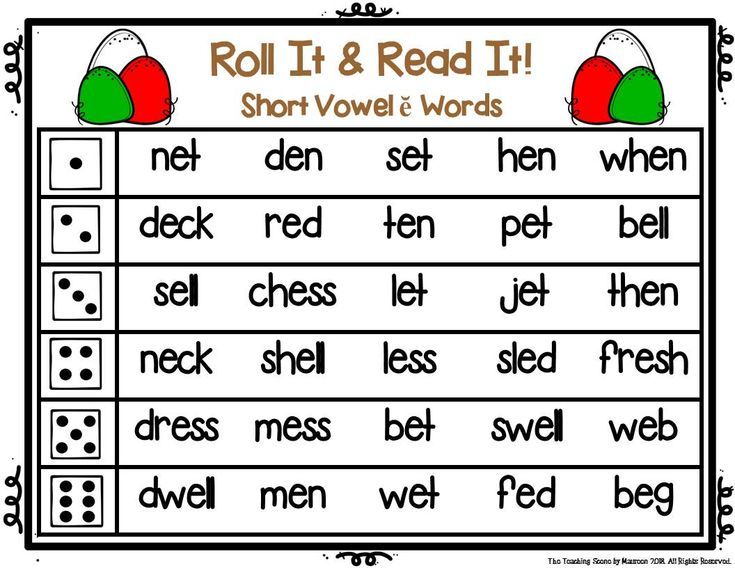 This can help them include all the necessary vowels when they try to spell the word.
This can help them include all the necessary vowels when they try to spell the word.
Guessing at the Ending of a Word
Emergent readers will often guess at the ending of a word. Your child comes across the word action and they say “acting”. They know -ing says ing, so obviously -tion must sound differently. But, they know it’s an ending and they want to keep going, so they guess at it.
The best way to help your child successfully navigate new words and word endings is to increase their syllable vocabulary. The more familiar they become with prefixes, suffixes, and common word parts, the more easily they can sound out new words on the fly.
If your child guesses at the endings of words, spend some time working on sounding out longer words with them by clapping or stomping (or whatever-ing) the syllables.
Once you have separated the syllables, you can talk about open- and closed-syllables and their pronunciations.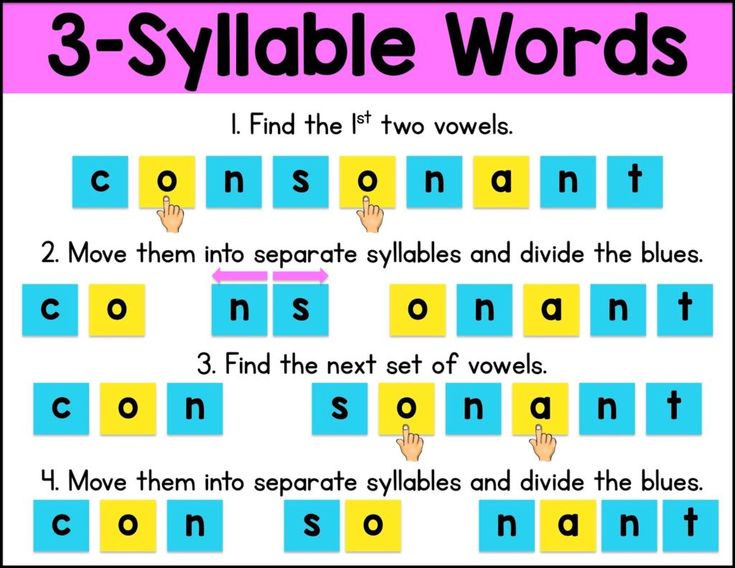
You can also review lists of words that contain common prefixes and suffixes. You don’t have to just read a list of words……booooorrrrring! Here are a few simple ideas:
1) Write the words on index cards and play memory match.
2) Create a crossword puzzle. (There are free online generators for this)
3) Create a word search. (Make it in Excel and print)
4) Write the words on index cards (can just use the memory match cards) and place them around the house for a scavenger hunt.
A little activity goes a long way for young learners!
Long Vowel or Short Vowel?
One big hang up for emerging and even more proficient readers can be how to pronounce a new word. Is the vowel a long vowel? A short vowel? Where is the stressed syllable?
If your child struggles with how to pronounce vowel sounds in unknown words, there are a few strategies you can brush up on to help his or her.
1) Review the syllable rules. This will help your son or daughter correctly break the word into syllables.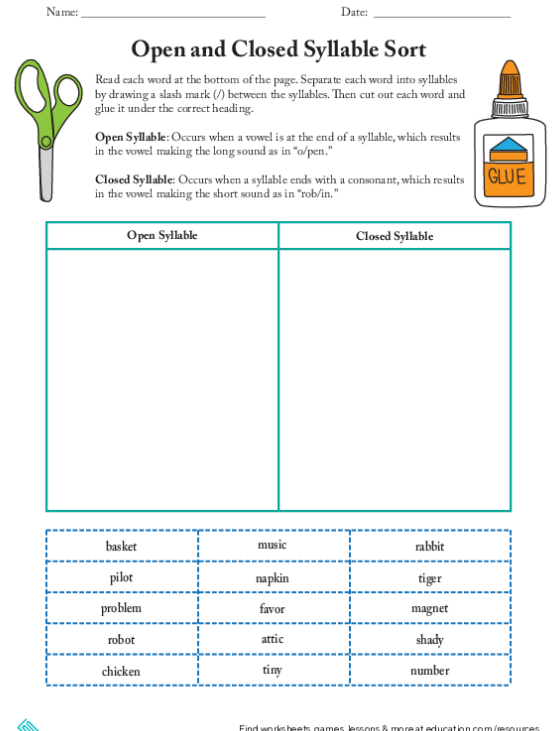 You can find a printable poster in my Homeschooling Resource Library when you sign up for my email list at the bottom of this post.
You can find a printable poster in my Homeschooling Resource Library when you sign up for my email list at the bottom of this post.
2) Talk about open and closed syllables. Open syllables end in a vowel and usually have a long vowel sound. Closed syllables have the vowel surrounded by consonants and generally have a short vowel sound.
3) Nouns, adjectives, and adverbs are usually stressed on the first syllable. Verbs are usually stressed on the second syllable. Help your child learn to use the context to determine what part of speech the word is in their reading.
2 Syllable Word Activities
Practice is the name of the game when it comes to reading abilities. Here are some fun activities and printables to let your child practice working with syllables.
You can grab these free 2-Syllable Word Hunt activity pages in my Homeschooling Resource Library by signing up for my email list at the bottom of this post.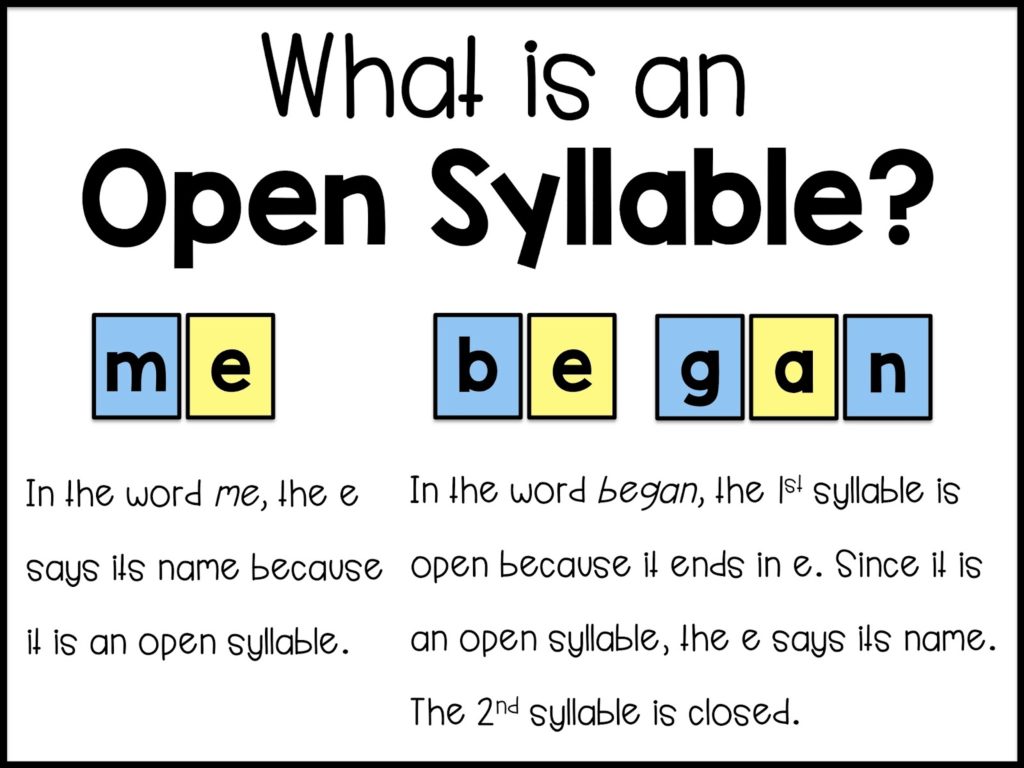
Teachers Pay Teachers has great products for so many things! You can find a lot of free resources, but the paid ones are usually very reasonably priced an really high quality. These free resources look fun for working on 2-syllable words:
Children take turns reading word cards in this fun game. But, if they pull a Roar! card they have to put back their stack. Oh no! There is also a similar rabbit version of this type of game.
Practice creating real words from syllable cards in this self-checking activity.
There are also several worksheets on this site that provide syllable practice. You can find worksheets for a bit more challenging words here.
Are you looking for simple ways to make your homeschool more fun and relaxing? Do you want your children to look forward to school? Are you ready to instill a love of learning in your children? Sign up below to join my email list.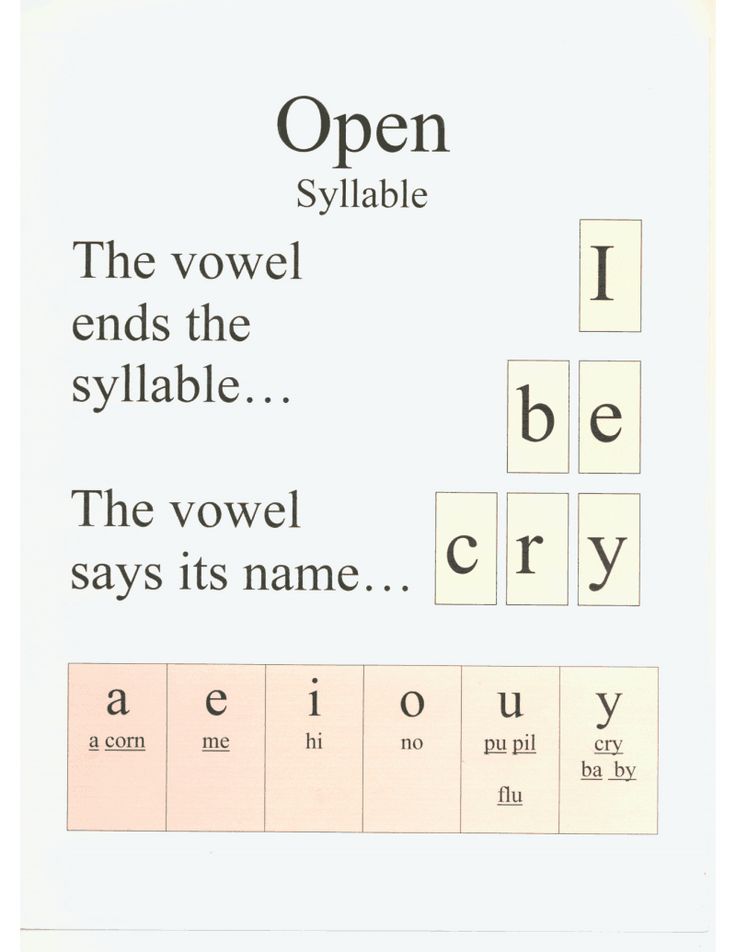 Not only will you get access to my subscriber only freebies, but I share advice and encouragement on creating a fun, relaxing homeschool environment where learning can thrive! Sign up below.
Not only will you get access to my subscriber only freebies, but I share advice and encouragement on creating a fun, relaxing homeschool environment where learning can thrive! Sign up below.
Share and save!
82 shares
Two-syllable words are... Syllable division (examples)
Two-syllable words are words in which two vowels form two syllables
The number of phonetic syllables in a word depends on how many vowels it contains. The vowel sound is syllabic. It can form an independent syllable or one or more consonants are grouped around it and form a syllable.
Ex.0012
The above words contain two vowels, respectively, they form two phonetic syllables. We call such words two-syllable words.
Two-syllable words contain two vowels that form the same number of phonetic syllables in them.
Examples of disyllabic words
Valve, heart, rag, roof, bank, kidney, pocket, door, lock, sun, sky, arm, leg, question.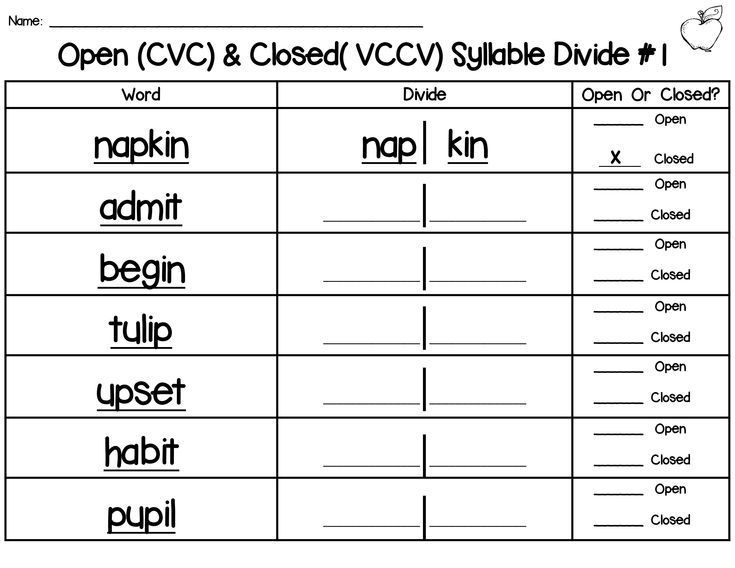
Learn to divide two-syllable words into syllables
To divide a word into phonetic syllables, you need to take into account that syllables are different in their sound composition.
It can have both open and closed syllables.
Open syllable
Open syllable constitutes a consonant with a vowel or only a vowel. Most syllables in Russian are open.
Examples
ko-ra, du-ma, bu-rya, merge-va, kro-na, quarrel-ra, ki-no, re-ka
Two-syllable words "ba-nan", "ve-ter", "glo-bus" consist of the first open syllable and the second closed one.
Closed syllable
Closed syllables form all consonants at the end of words, as well as voiced unpaired consonants [d'], [l], [m], [n], [r] and their soft pairs [l'] , [m '], [n '], [p'], located both in the middle and at the end of the word.
A sonorant consonant in the middle of a word goes to the first syllable.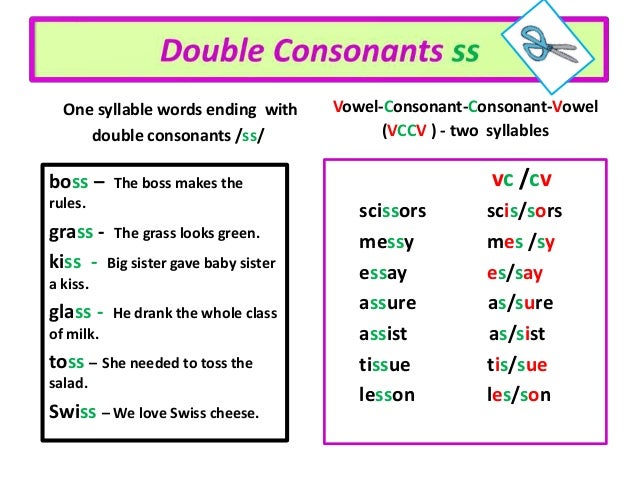 With this in mind, we divide two-syllable words into phonetic syllables:
With this in mind, we divide two-syllable words into phonetic syllables:
| ka; | ; |
| to l to - to l -to; | per l ka - per l ka; |
| ba m beech - ba m - beech; | ca m bo - ca m -bo; |
| ka n va - ka n -va; | sa n ki - sa n -ki; |
| a r buz - a r - buz; | kva r tal - kva r - tal. |
It is more difficult to syllable two-syllable words in which several consonants occur in the middle. If the initial syllable of a two-syllable word is a vowel or consonant with a vowel, two consonants with a vowel, then they form the first open syllable. It is followed by cluster deaf consonants or a combination of deaf and voiced , two voiced consonants, except for sonorants. They form the second syllable, for example:
| board - do- sk a; | bl sn a - ble - sn a; |
| ko st yor - ko- st yor; | ma sk a - ma- sk a; |
| cre st ik - cre- st ik; | May Thu a - May Thu a; |
| to Thu a - Thu a; | other wb a - friend wb a.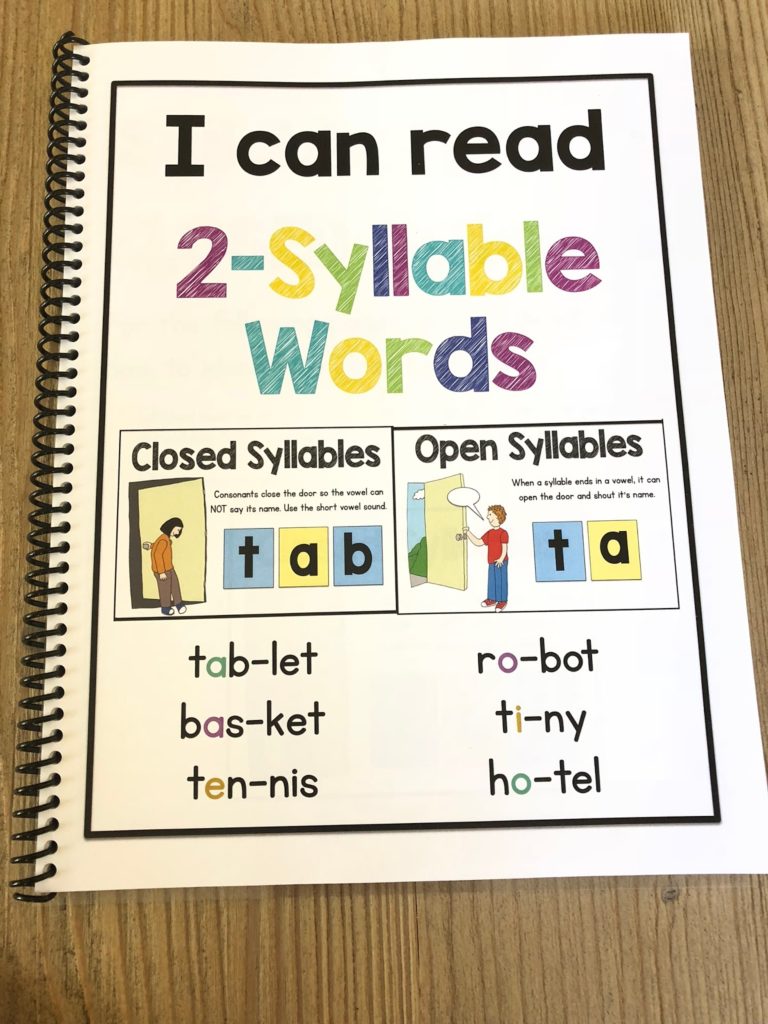 |
How to transpose disyllabic words?
Two-syllable words with open syllables and closed syllables that form unpaired voiced consonants are hyphenated according to phonetic syllable division.
Examples
ru-ka, face, ko-ra, pear-sha, li-ra, eyes-za, rei-ka, mai-ka, man-ka, lar-chik, balcon
We will take into account the fact that some two-syllable words with a cluster of consonants in the middle can be transferred both along the phonetic syllable division and by breaking up this combination of consonants, for example:
- d
- heart - heart, heart;
- violin - violin, violin.
Additional material
Learn more about the rules of spelling hyphenation.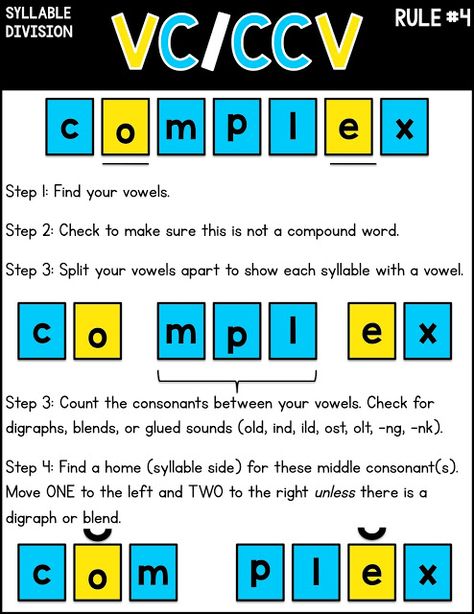
Some two-syllable words begin with syllable-forming vowels.
Examples
a-rest, a-nons, o-tek, o-zone, o-beef, u-part, u-dav, i-rice, i-va, i-dol
These words we write entirely on the line, since one letter cannot be torn off from the word.
Two-syllable words - what they are, examples, how to understand and transfer rules (grades 1-2)
4.5
Average rating: 4.5
Total assessments were received: 70.
Updated October 29, 2021
4.5
Average rating: 4.5
A total of assessments: 70.
Updated October 29, 2021
All words in Russian consist of syllables. A syllable is the sounds of a word, pronounced with one push of air. A syllable can consist of one vowel sound or of a vowel and several consonants, be open or closed. If a word has two syllables, then these words are two-syllable. Let's remember what syllables are and how to understand how many syllables are in a word.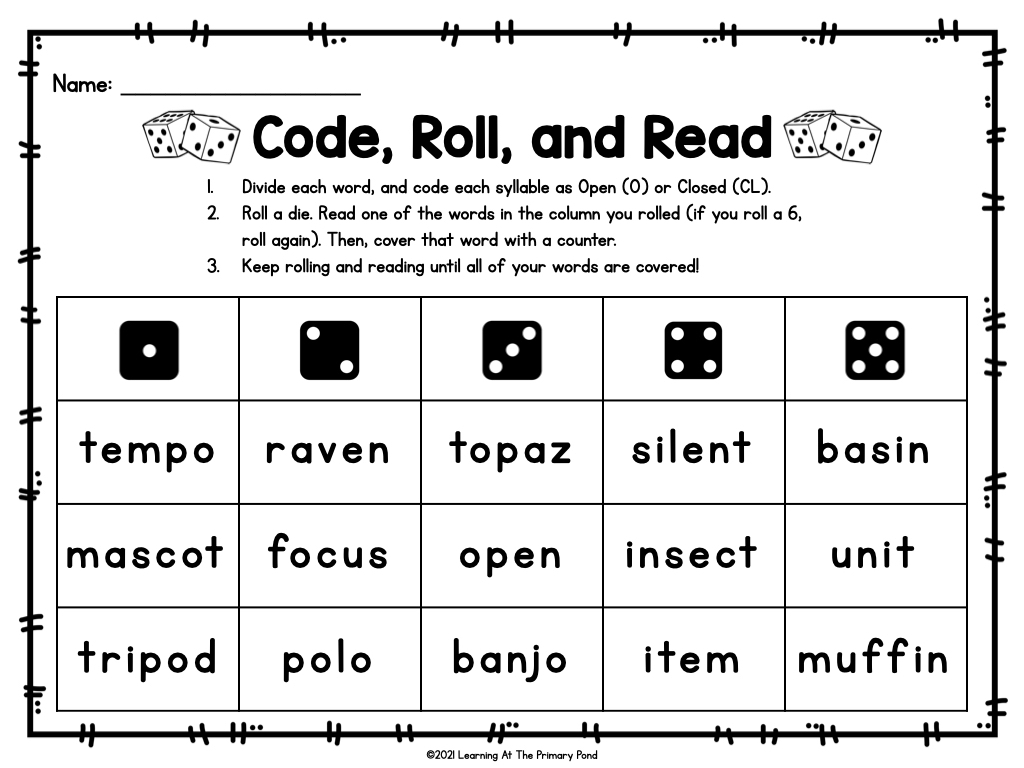
Syllables
In one syllable, there is a mandatory vowel sound, next to which one or more consonants: vo-da, sos-na . A syllable can only consist of a vowel: o-on .
How to understand how many syllables are in a word? Bring a straight palm to the chin from below, lightly touching it. Speak the word clearly. How many times the selection touches the palm, so many syllables in the word.
Syllables are of two kinds:
- open;
- closed.
Open syllable
Open syllables ending in a vowel are formed in two ways. Any syllable consists of a vowel sound, because it is it that is formed by a voice, therefore a syllable can be formed by a single vowel sound: e-ko-log, a-rest .
The second type of open syllable is when a consonant is followed by a vowel: ru-ka, vo-la .
An open syllable can be pronounced for a long time, sing it.
Closed syllable
Closed syllables are those at the end of which there is a consonant sound: artist, cover .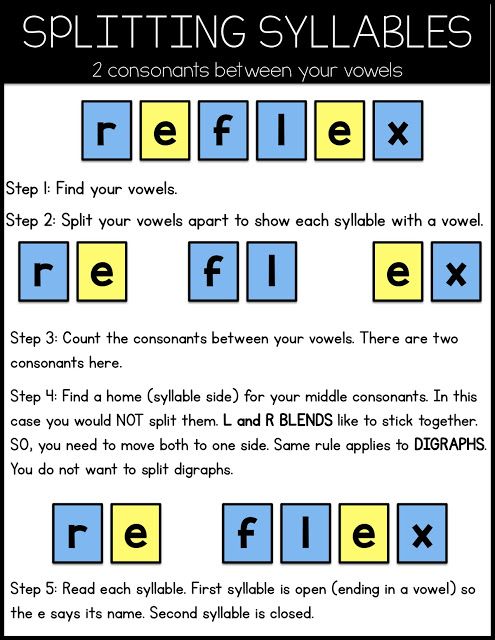
A word can only consist of open syllables or closed syllables, or both.
- Only open syllables: pa-na-ma, hat-pa.
- Only closed syllables: entrance, dawn.
- Mixed syllables: ko-tel, kar-ti-na.
Syllable division
To divide a word into syllables, use the rule:
- Speak the word clearly.
- Underline and count the number of vowels.
- Perform syllable division.
Between two adjacent consonants, a syllable division is drawn between them: ley-ka, man-da-rin
b and b do not denote sound, therefore they are attached to the consonant, after which they stand : friends, rise.
Transfer Rules
When writing, words should be transferred to another line in accordance with the division into syllables, but this takes into account the morphemic division of the word, that is, it is not recommended to divide parts of the word during transfer.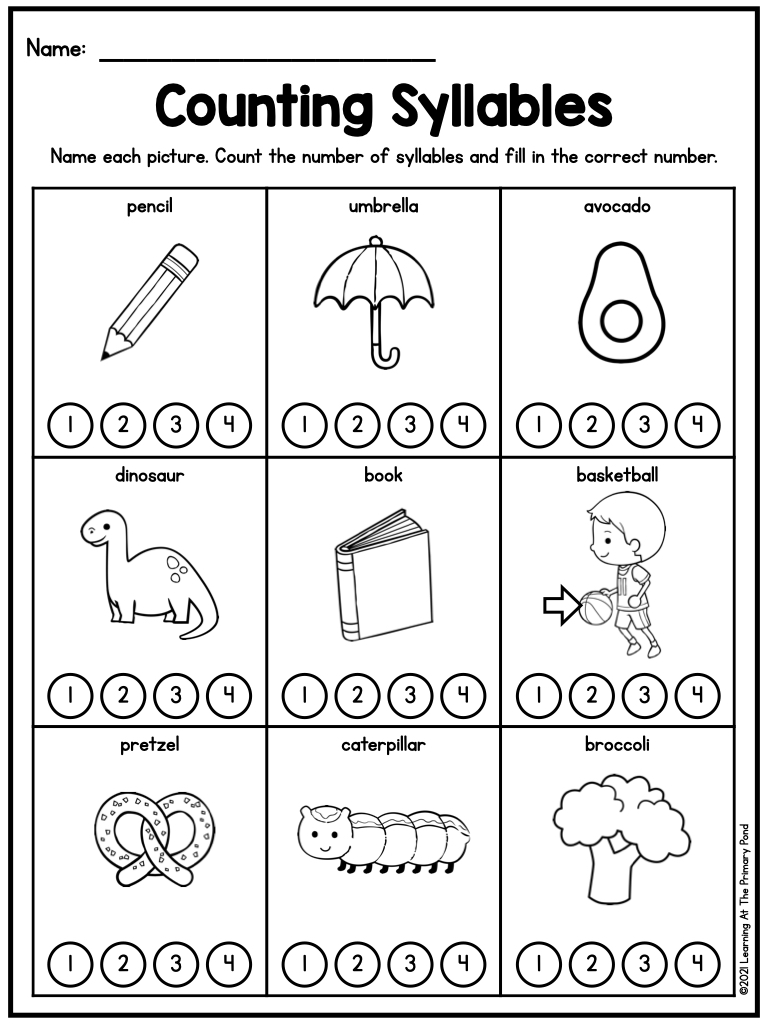 Brotherly - brotherly . The root of the word is -brother-, the suffix is -sk-, , therefore, when transferring , C was attached to the second syllable.
Brotherly - brotherly . The root of the word is -brother-, the suffix is -sk-, , therefore, when transferring , C was attached to the second syllable.
Let's look at what options for transferring the word to decorate . Let's divide the word into syllables: r a z- y c-r a -c and t : we emphasized 4 vowels, which means 4 syllables. The best option: transfer by division into syllables. But, pay attention, the division into syllables in this word does not coincide with the division into morphemes: times-beautiful . The second prefix remains -y- , so you have the right to attach it when transferring to any part of the word: un-decorate , un-color .
Monosyllabic words are not subject to hyphenation, they are written on one line: oak, table .
Do not leave at the end of a line or transfer to another line when wrapping:
- One vowel: yab-loko.
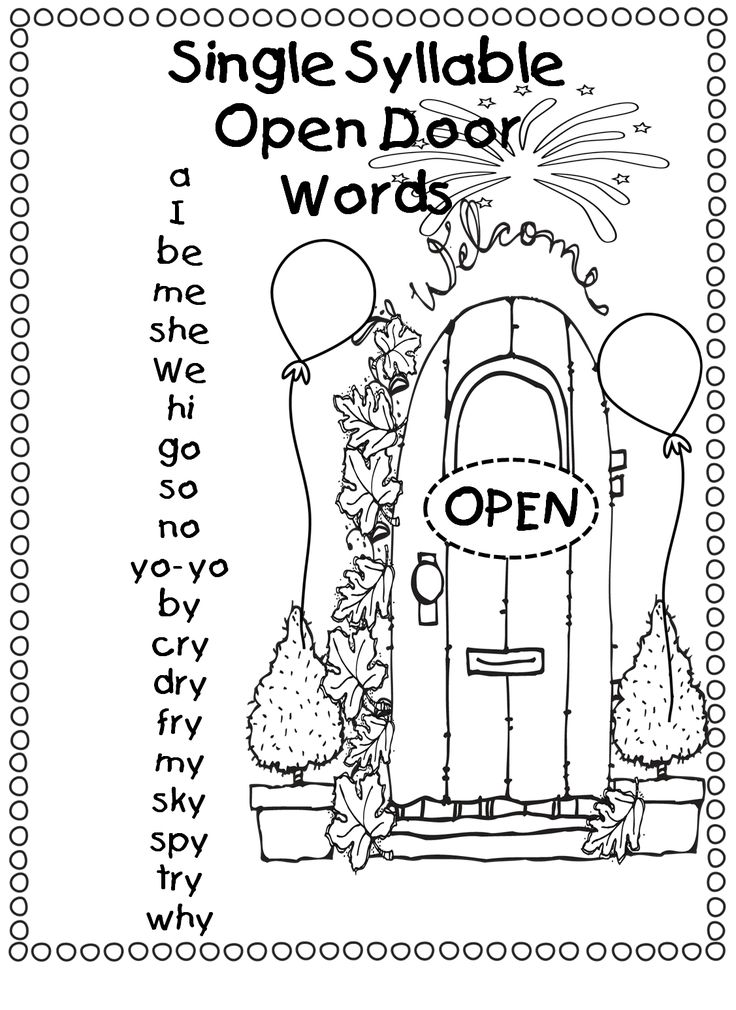
Learn more

